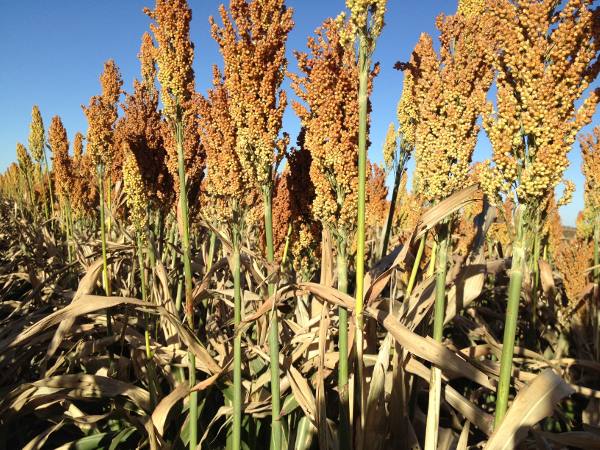
Cotton and grain sorghum weathered an early October freeze better than many observers feared but some problems may warrant attention as growers prepare for harvest, say Texas AgriLife Extension specialists.
Kerry Siders, integrated management specialist for Hockley and Cochran Counties, says follow-up observations of crop damage 10 days after the freeze are encouraging.
Dr. Calvin Trostle, Extension agronomist at the Lubbock AgriLife Research and Extension Center, “has done an excellent job of tracking the impact of the freeze on grain sorghum,” Siders said.
Trostle’s report indicates better than expected conditions.
“On October17, I revisited selected fields that I assessed for freeze damage on Oct. 9 and10,” Trostle reported. “What I saw in the field was encouraging. In the Oct. 10 report I noted that outcome of the freeze appeared to depend on whether the portion of the stalk above the canopy up to the head avoided a freeze.”
(To review the earlier report, view online at: http://lubbock-tamu-edu.wpengine.netdna-cdn.com/files/2012/10/Grain-Sorghum-Frost-Freeze-Assess-11Oct2012-TX-S.-Plains.pdf”
“I have not found any apparent frozen stalks in the fields I have looked at. The upper portion of the stalks in all revisited fields retains a light, pale green color and is actively functioning. Further feedback from growers and consultants parallels my conclusions last week that the freeze did not have the damaging impact we feared.
Trostle says some fields as far south as Dawson County—in low-lying areas appear to have a greater proportion of the leaf canopy—up to half—killed. “More typical fields were about 1/4 to 1/3 frozen.
“Stalks damaged by the freeze would lose their light or pale green color and begin to turn tan and brown if they were frozen. Checks of grain maturation on these same fields suggest that grain maturity is advancing forward from soft dough to hard dough due to continued growth and heat unit accumulation. This will help increase yield and result in improved test weights.”
Trostle recommended that grain sorghum producers touch base with grain elevators before taking their grain in.
“Elevators and grain buyers have provided information on their discount schedule for low-test weight grain sorghum,” he said. “It appears that most buyers will likely buy grain sorghum at test weights down to 48 pounds per bushel. Unless you have your grain contracted, it is best to call several buyers to see what might be your best option if you determine you have low test weight grain sorghum at harvest time.”
Siders said cotton growers are also concerned about damage potential. News for cotton is also good, with minor cautions, including the larger number of acres that have to be checked.
“After sending out an update on grain sorghum I have received requests for an update on the impact of the freeze to cotton,” Siders said.
“With so many more acres of cotton we have many more scenarios that have played out over the last 10 days. In general, I would say that cotton has fared better than some may have anticipated here in Hockley and Cochran Counties.”
He did say, however, that he’s seeing immature bolls beginning to sour on late cotton and/or on the part of the crop set later in the season that did not have a boll opener applied within the first week of the freeze.
“Most of the damage to better cotton was absorbed by the foliage,” Siders said. “This has caused an unexpected consequence of stimulating regrowth in the stalk. This will complicate matters more if this continues and we do not receive a hard killing freeze soon. As long as current warm sunny weather pattern continues, harvest aids should continue to be mostly effective, but regrowth will be difficult to deal with.”
About the Author(s)
You May Also Like






